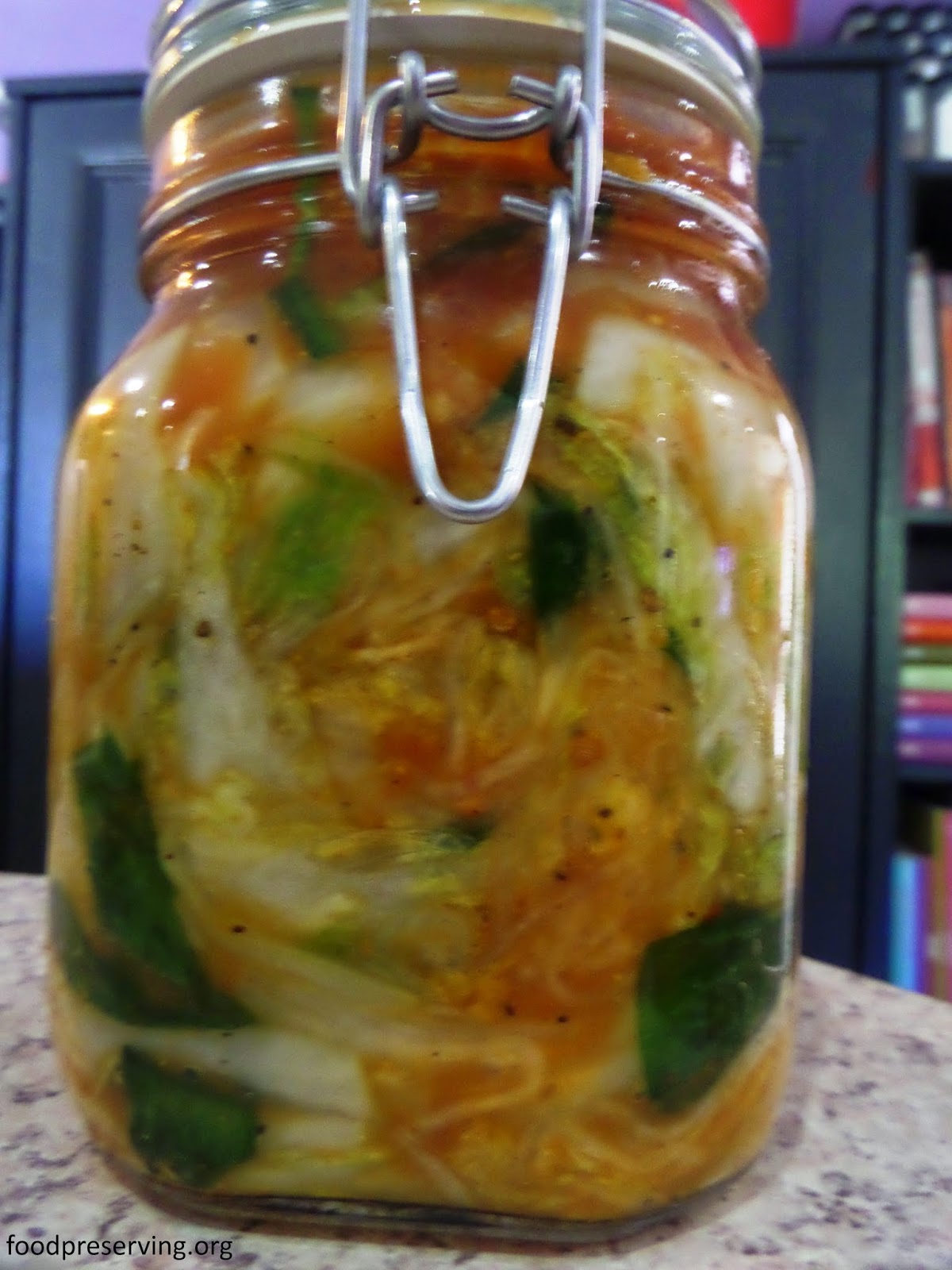 Processing: Fermentation 24-36 hours
Processing: Fermentation 24-36 hours Storage: Refrigerator 2-3 weeks
Yield: 4 cups
A spicy and sour fermented Korean dish made from various ingredients - we include chinese cabbage, white radish, spring onions, ginger, garlic and a homemade curry spice blend. With a short fermentation (24-36hrs) then refrigeration, you can enjoy your homemade kimchi for 2-3 weeks or ferment longer if desired (see notes). Experiment with various spices and vegetables, such as shrimp paste, fish sauce, salted shrimp and fresh or dried chilli. A delicious, nutritious lacto-fermented food to include every day.
1 napa (chinese) cabbage
1 tablespoon sea salt
6 garlic cloves, peeled and grated
2.5cm (1 inch) fresh ginger, peeled and grated
4 spring onions, 2.5cm (1 inch) pieces
1 white radish, peeled and julienned
2 tablespoons curry spice blend
Prepare cabbage.
Discard outer leaves of cabbage, halve and wash well. Drain and cut each cabbage half into 2-4 wedge (depending on size). Cut each cabbage wedge into 3-4 pieces and place into a large bowl. Sprinkle with salt, toss to combine and refrigerate for 2 hours to remove excess moisture from the cabbage.
Rinse cabbage.
Rinse cabbage in water to remove salt. Squeeze to remove excess liquid. Combine with remaining ingredients (use gloves if adding chilli into the mixture).
Pack tightly into hinged jar (or crock, or jar with airlock).
Pack mixture tightly into a 1L (or quart) jar.
Ferment for 1-2 days.
Once numerous bubbles appear after kimchi is pressed, refrigerate kimchi and consume within 2-3 weeks.
NOTES
- Try using different varieties of cabbage;
- Make only enough to be used within 2-3 weeks - start new batch a few days before the first batch is finished;
- Replace radish with carrot if preferred;
- A classic kimchi version is to use 2 tablespoons shrimp paste (or fish sauce, or finely diced salted shrimp) and 1-5 tablespoons korean chilli flakes/powder. Wear gloves when handling chilli.
- Curry spice blend: in a small saucepan, toast spices individually then crush as desired. We use a combination of coriander seeds (halved), chilli, turmeric, fenugreek, cardamom pods, cumin seeds, black mustard seeds.
- Use a hinged/swing-top jar, or attach an airlock to your plastic lid or mason jar lid. For larger quantities a fermentation crock is ideal - instead of cutting the cabbage into pieces, keep them in wedges and rub the spice blend into the cabbage leaves. Fold the wedge in half and pack into the crock.
- LONGER FERMENTATION: can be achieved by adding 2 tablespoons raw sugar into the mixture with the spices and vegetables. Use a muddler to press the mixture into the jar and release extra liquid. The kimchi should be submerged in the liquid. Ferment for 1 week or more until sour to your liking then refrigerate. This longer fermentation results in a higher quantity of lactic acid bacteria (which consume the sugar) and will help preserve your refrigerated kimchi for up to 6 months.
- Serve kimchi (i.e. 1/4 cup amounts) as part of a nutritious meal, or try making a kimchi stew, kimchi fried rice or stir-fry, or if you have lots to use up, try making kimchi pancakes or kimchi soup.
VIEW STEP-BY-STEP PHOTOGRAPHS OF THIS RECIPE

